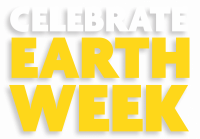
An eco-friendly summer is not less fun; it is just better for the planet. And when we all take steps to make summer eco-friendly, we also help by doing our bit to protect nature for future generations to enjoy.
Picnics and cookouts are regular occurrences in summer. However, eating outdoors or ordering meals can generate a lot of avoidable waste if you allow it. Don’t use disposable paper or plastic plates, cutleries, napkins, or cups. Instead, take reusable alternatives when you go out to eat.
Related: Can you recycle paper plates?
Disposables consume resources like trees and fossil fuels, but you can only use them once. Single usage does not quite do justice to the environmental costs. Using reusable eating utensils can make a massive dent in your carbon footprint. In addition, it helps cut down on waste and natural resource consumption.
And when it comes to washing up those plates when you get them home, opt for zero-waste dish soap or zero-waste dishwasher detergents for perfectly sparkly clean dishes without the plastic bottles and environmental harm.
Shop food locally
Want to eat healthily, save on emissions and help to boost the local economy? These are some of the many reasons to eat locally-produced food. You will probably eat more meals in the summer as part of the eco-friendly activities you have planned.
A sustainable holiday meal plan starts with shopping for vegetables and other food ingredients at the local farmers’ market. Because of the short food supply chain, it has a lesser carbon footprint compared to imported processed foods. Buying locally grown food also helps your local community save food from going to waste.
Additionally, eating less meat has positive impacts on the health of you and the environment. Research has linked meat production with deforestation1, water shortages, and dangerous levels of CO2 emissions.
Outdoor cooking is one great thing about the holidays; it brings friends together. However, outdoor cooking can pollute fresh air if you don’t use environmentally friendly methods. Instead of charcoal or wood grills, use an electric or propane grill. You can also use pellet grills that use compressed wood scrap and emit less carbon.
Eco-friendly activities will generate
some waste. Don’t just throw everything you no longer need into the trash. Look for opportunities to recycle them instead. You can use food waste as compost for your garden, and check out our recycling tips to maximize what actually does, in fact, get recycled.
Learn more about EvCC Sustainability! www.everettcc.edu/green
Mariya Zelenskyy – Media and Outreach Coordinator sustainability@everettcc.edu









